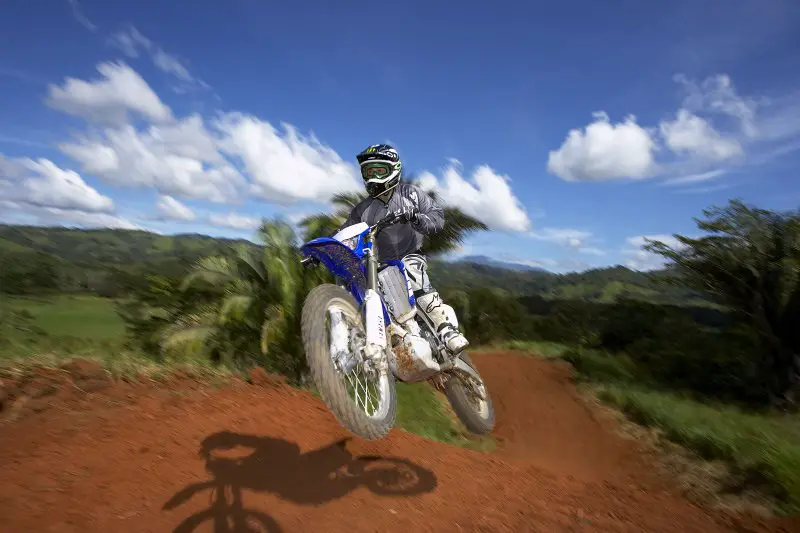Yamaha's Costa Rica Holiday |
Photos by Frank Hoppen and Jeff Kardes
The '07 WR 250 and 450 jungle tourS
Yamaha decided to debut its WR series in the jungles of Central America. Mike Metzger was on hand to humble all who dared stick to his wheel as well as a hard working crew of technical staff to keep the bikes humming and getting our suspension dialed. There was also some whispering about hotel cabanas, point breaks, exotic food and sick canopy tours--who could resist.

Metzger wows locals
The big new on the technical side is that the WR 450 gets most of the upgrades that were endowed to last year's YZ, including the aluminum frame, upright cylinder, internal oil passages and oil in the crankase instead of the frame. Most of the changes in the chassis and engined are aimed to lower the center of gravity and centralize the mass of the bike. Cam timing, however, has been tweaked to increase low-end pulling power without sacraficing top speed. This should be good news for anyone who actually will ride in deep woods.

Stump-pulling low end tames the jungle
The 250's engine is not all that different from last year's, but its cam timing has been altered to widen the powerband and boost its low-speed output. The gear ratios have been tightened up between 3rd, 4th, and 5th, and two teeth have been added to the countershaft sprocket to brighten up the 250's top speed. Good news for all is that the 250 also gets an aluminum frame.

Despite Yamaha's over-the-top hospitality and preparedness, when the time came to fire up the bad boys, the WRs failed to deliver the goods. The culprit was soon discovered to be bad gas. As it turns out, Costa Rica defines gasoline by its smell, not by its octane rating. The bad news was that our test bikes were down on power--the good news is we learned that you can take your bike to exotic places and use the local gas without serious damage to your bike.

What the WR 250 is all about
Day one. we took the 250 from San Jose to Playa del Hermosa (about 120 miles of fire road and forest singtletracks). The smaller WR was a delight in the tight stuff--as promised, the bottom-end torque was much improved. When we hit the flat-out sections, there was a sense that some of the 250's torquey trail expertise came at the expense of its top speed performance. (With real gasoline, this may have been a different story).

Fire roads were a break in the action
We were ushered to a motocross track for a more intense test session. It was located near a small village somewhere. This was a good reminder of how specialized a good woods bike setup is. The 450 was powerful and tractable, but its suspension is too soft for repeated bashing through manufactured whoops and jumps--and its wide range gearbox felt cramped. If you need to race now and then, the WR can make it fun, but take it out on trail if you want to make it happy.

Motocross trials proved that the WRs were specialized for a different purpose
Back in the jungle, our Yamahas befriended us once more. Our trail guides, Chris Kilbride and Jamey Harmon gave us the gold medal tour, winding through open hills and deep beneath the forest canopy--taking good care not to beat us down to the point where we couldn't enjoy the refreshments waiting for us each evening at the beach-side cabanas. A good time was had by one and all.

What did we learn in Costa Rica? The Yamaha has finally taken the genre seriously. Gone are the second-tier frames and performance treatments targeted at budget-minded weekend warriors. The 2007 WRs are the real deal--competiton-ready tools that are at home in the tight nasty stuff that no motocross or playbike can master.
For your own Costa Rican adventure check out http://www.costaricaunbound.com/
















